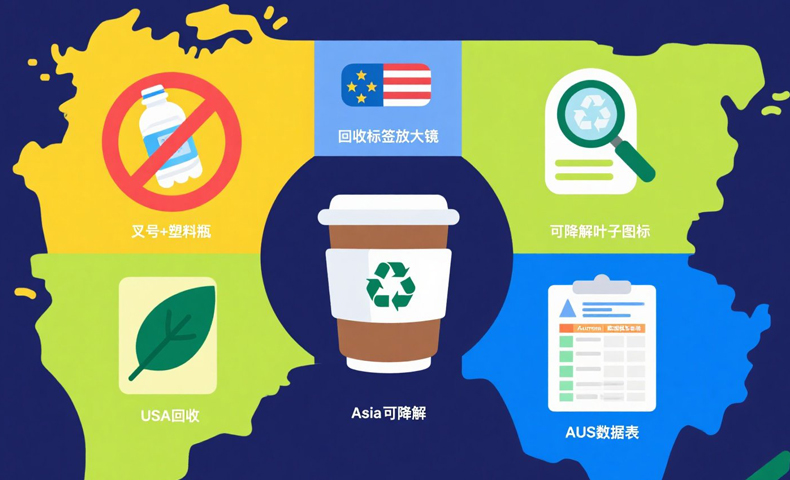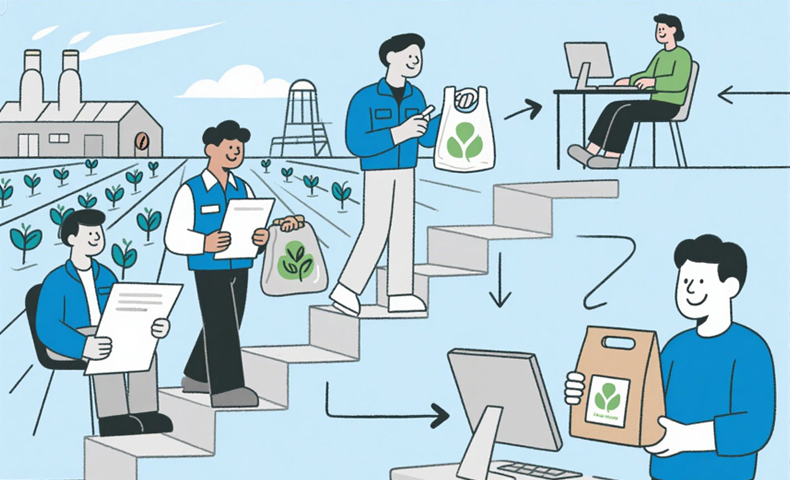How Coffee Packaging Regulations Are Changing and What Brands Must Do
Coffee packaging regulations are rapidly evolving, leaving many brands scrambling to stay compliant. If you’re in the coffee industry, you know the importance of keeping up with the latest regulations. This change can impact your bottom line, brand reputation, and overall customer trust. Here’s what you need to know.
Why Are These Changes Happening?
New regulations in coffee packaging are being driven by various factors, including consumer health concerns, environmental pressures, and stricter governmental policies. Packaging waste has become a significant issue globally, and industries, including coffee, are under increasing pressure to adopt sustainable practices.
Changes in coffee packaging regulations are not just a trend; they are a necessity. As more countries push for sustainability and stricter consumer protection laws, brands must adapt or risk falling behind.
1. What Are the Recent Changes in Coffee Packaging Regulations?
PAS Strategy:
You may be wondering, what exactly has changed in coffee packaging regulations? With recent shifts, staying compliant can seem overwhelming, but understanding the core changes can help mitigate any concerns.
New regulations focus on packaging waste, recycling, and labeling practices. Many countries now require clear, standardized labeling for recyclable materials, and some have imposed bans on certain plastic packaging types.

How These Changes Affect Brands
The regulations vary by region, but key updates include:
- Mandatory eco-friendly materials like biodegradable plastics or paper.
- Strict recycling labels and logos on packages.
- Tightened regulations on packaging content claims (e.g., organic, non-GMO).
Table: Summary of Key Coffee Packaging Regulations Changes
| Region | Key Change | Impact on Brands |
|---|---|---|
| EU | Bans on non-recyclable plastics | Brands must adopt recyclable packaging |
| US | Mandatory recycling symbols | Brands must update labels to comply |
| Asia | Focus on biodegradable materials | Shift to eco-friendly materials |
| Australia | Increased waste reporting requirements | Brands must report waste metrics annually |
2. Why Are Coffee Packaging Regulations Changing?
PAS Strategy:
You might be asking why these changes are happening in the first place. The driving force behind these shifts is a combination of environmental responsibility, public demand for sustainability, and the rising cost of waste management.
Changes are happening because the world is becoming more aware of the environmental impact of packaging waste. With landfills filling up and plastic waste choking oceans, industries are being pressured to find alternatives that reduce their carbon footprint.
The Role of Sustainability in Packaging
The push for eco-friendly packaging is also being fueled by consumer demand for sustainable products. More consumers are actively seeking out brands that prioritize environmental concerns, and packaging plays a significant role in their purchasing decisions.
Table: Factors Driving Changes in Coffee Packaging Regulations
| Factor | Explanation |
|---|---|
| Environmental Concerns | Packaging waste contributes significantly to landfill overflow and ocean pollution. |
| Consumer Demand | Consumers are seeking brands that provide environmentally responsible products. |
| Government Legislation | New laws are being enacted globally to reduce packaging waste. |
3. How Do Coffee Brands Adapt to New Regulations?
PAS Strategy:
With so many changes, how can your coffee brand adapt? You might be feeling a bit overwhelmed, but there are clear steps you can take to stay compliant and protect your brand.
Adapting to new regulations involves understanding what the changes are and implementing solutions that meet the legal requirements. Brands can stay ahead by incorporating sustainable practices into their packaging processes.
Steps to Adapt
- Stay Updated: Continuously monitor changes in regulations across key markets.
- Choose Eco-Friendly Materials: Prioritize recyclable or biodegradable materials.
- Update Packaging Designs: Ensure all packaging complies with new labeling standards.
- Train Your Team: Educate staff on new regulations and best practices for compliance.

Table: Steps for Coffee Brands to Adapt to New Packaging Regulations
| Step | Action |
|---|---|
| Stay Updated | Regularly check industry news and government websites for updates. |
| Eco-Friendly Materials | Transition to biodegradable or recyclable materials. |
| Update Packaging | Redesign packaging with new labeling and symbols. |
| Staff Training | Provide workshops on new packaging laws and regulations. |
4. What Are the Environmental Impacts of Coffee Packaging Regulations?
PAS Strategy:
Many coffee brands might not see the environmental side of packaging regulations, but it’s crucial to understand the impact. By complying with these new laws, your brand can significantly reduce its environmental footprint.
The shift to eco-friendly packaging isn’t just a trend; it’s a necessity. Brands that embrace sustainability are not only helping the planet but also enhancing their own market appeal.
Positive Environmental Effects
- Reduced plastic waste: With the shift toward biodegradable or recyclable materials, coffee packaging will have a smaller environmental impact.
- Lower carbon footprints: Sustainable packaging reduces the carbon emissions associated with production and disposal.
Table: Environmental Benefits of Compliant Coffee Packaging
| Benefit | Explanation |
|---|---|
| Reduced Waste | More biodegradable packaging reduces long-term landfill waste. |
| Lower Carbon Footprint | Eco-friendly materials require less energy to produce and recycle. |
| Improved Recycling Rates | Clear labeling improves consumer recycling behavior. |
5. How Will New Coffee Packaging Regulations Affect Packaging Costs?
PAS Strategy:
You might be concerned about how these regulations will affect your bottom line. While it’s true that some packaging options may be more expensive, there are ways to balance compliance with cost-effectiveness.
The transition to sustainable packaging may initially increase costs, but it can lead to long-term savings through reduced waste and improved customer loyalty.
Impact on Brand Budgets
- Material Costs: Sustainable materials like biodegradable plastics are often more expensive.
- Manufacturing Costs: Implementing eco-friendly practices might require new equipment or processes, which could raise costs initially.
- Long-Term Savings: As consumers increasingly demand sustainability, brands that adapt quickly can attract a loyal customer base, improving profitability.

Table: Financial Impacts of Complying with New Packaging Regulations
| Impact | Short-Term | Long-Term |
|---|---|---|
| Material Costs | Higher costs for biodegradable plastics | Potential savings from reduced waste disposal fees |
| Manufacturing Costs | Upfront investment in new equipment | Return on investment through loyal customers |
| Customer Loyalty | Increased consumer demand for eco-friendly products | Long-term revenue growth from brand trust |
6. What Are the Most Common Mistakes Coffee Brands Make During Adaptation?
PAS Strategy:
As coffee brands transition to comply with new regulations, some common pitfalls can set them back. Identifying and avoiding these mistakes early on is key to a smooth adaptation process.
Adapting to new packaging regulations can be tricky, especially for brands new to the sustainability movement. However, staying proactive and informed can prevent costly errors.
Common Mistakes to Avoid
- Ignoring the Fine Print: Failing to understand specific requirements can lead to non-compliance.
- Delaying Changes: Waiting too long to implement changes can lead to penalties.
- Underestimating Costs: Failing to budget for new packaging materials and equipment.
Table: Common Mistakes Coffee Brands Make During Adaptation
| Mistake | How to Avoid It |
|---|---|
| Ignoring Regulations | Regularly check government and industry updates to stay informed. |
| Delaying Changes | Plan ahead and set deadlines to meet new regulations. |
| Underestimating Costs | Budget for new packaging materials and equipment costs early on. |
Conclusion
The changes in coffee packaging regulations are here to stay. As a brand, adapting to these changes is not just about compliance but also about positioning your company as a leader in sustainability. While there may be challenges, the rewards of meeting these regulations—such as enhanced customer loyalty, brand trust, and a reduced environmental impact—are invaluable.
Embrace the changes, stay informed, and make sustainable packaging a cornerstone of your brand’s future.
FAQ Section
- Q1: What are coffee packaging regulations?
Coffee packaging regulations refer to the rules set by governments and environmental bodies that dictate how coffee must be packaged for safety, sustainability, and environmental protection. - Q2: How do coffee packaging regulations work?
These regulations enforce specific standards for the materials used, labeling, and disposal methods of coffee packaging. Brands must comply with these standards to ensure they meet environmental and health requirements. - Q3: What changes are being made to coffee packaging regulations?
The changes focus on promoting sustainability, including the use of biodegradable and recyclable materials, clearer labeling for recycling, and stricter controls on packaging waste. - Q4: Why should coffee brands care about packaging regulations?
Compliance with packaging regulations helps brands maintain their market position, build consumer trust, avoid penalties, and contribute to sustainability efforts. - Q5: How can small coffee brands adapt to packaging regulations?
Small coffee brands can adapt by staying informed about regulations, transitioning to eco-friendly packaging, and leveraging their sustainable practices to attract environmentally conscious consumers.
